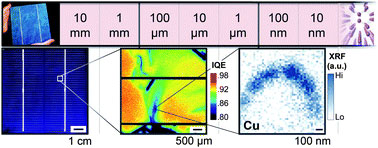| Oct 13, 2011 |
Small defects mean big problems for industrial solar cells
|
|
(Nanowerk News) Nanoscale clustering of metal impurities at intragranular dislocations within industrial mc-Si solar cells have been observed by users from the Massachusetts Institute of Technology working with the Center for Nanoscale Materials (CNM) X-Ray Microscopy Group, in collaboration with scientists at the Advanced Photon Source (APS).
|
|
These nanoscale clusters are shown to directly correlate with local recombination activity within the cell, regulating the overall performance of the energy conversion device ("Nanoprobe X-ray fluorescence characterization of defects in large-area solar cells").
|
 |
| High-resolution X-ray nanofluorescence spectroscopy identifying metallic nanoclusters responsible for poor transport in solar cells.
|
|
Industrial conversion efficiencies of solar cells are far from their theoretical maxima, and their performance is often limited by inhomogeneously distributed nanoscale defects. The team used X-ray nanofluorescence spectroscopy at the Hard X-Ray Nanoprobe beamline to probe the elemental nature of recombination-active intragranular dislocations in industrial solar cells. Nanoscale metal impurities of copper and iron were shown to cluster near dislocations with a high recombination strength, and be absent from dislocations with a low recombination strength.
|
|
This correlation gives an important insight into the effects of nanoscale metal impurities on energy conversion device performance.
|

